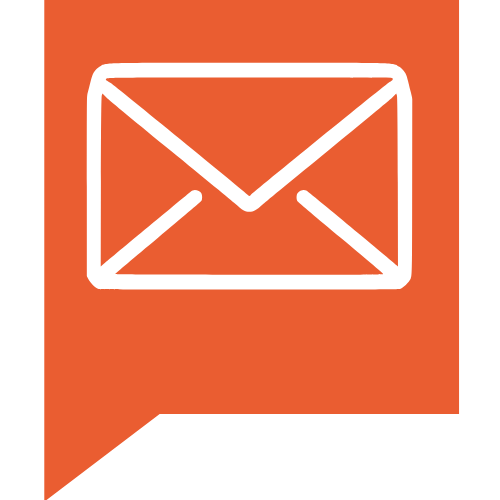5 Strategies for Using Email Marketing to Drive Conversions and Sales
Email marketing remains a powerful tool for driving conversions and sales in today's digital landscape. This article explores effective strategies to maximize the impact of your email campaigns, drawing on insights from industry experts. From building trust with valuable content to personalizing messages based on user behavior, these actionable tactics will help businesses elevate their email marketing efforts and achieve tangible results.
- Build Trust with Value-Driven Content
- Personalize Emails Based on User Behavior
- Deliver Actionable Tactics in Every Email
- Spark Curiosity with Intriguing Subject Lines
- Segment and Customize for Targeted Campaigns
Build Trust with Value-Driven Content
Email is one of the few channels where you control both the message and the audience. It's direct, personal, and when done right, extremely effective at driving sales.
One strategy that consistently works is what I call a "quiet ramp-up." Instead of teasing an offer or hinting at a product drop, I send 3 to 4 emails beforehand that deliver pure value. These include real case studies, breakdowns of how something works, or lessons learned from past launches. So they're not previews. They're genuinely useful content that builds trust without setting off sales alarms. Because of this, when the actual offer lands, people are more open to it since they've already seen proof of value.
Segmentation plays a big role too. But not just based on tags or lists. Behavior matters more. So if someone clicks through to a pricing page but doesn't buy, I'll follow up with a short FAQ-style email that focuses on common concerns or hesitations. If someone opens but doesn't click, I might test a new subject line or simplify the message. These small adjustments help improve conversion without inflating CAC.
Subject lines stay simple. No emojis or urgency tricks. Because the goal is to be consistent and clear. Over time, that builds trust and leads to higher open and click-through rates. It's about being reliable.
Each email has one job, one clear CTA, and no fluff. That focus keeps things clean, efficient, and profitable.

Personalize Emails Based on User Behavior
As CEO, my approach to using email marketing to drive conversions and sales centers around personalization and behavior-triggered automation. One highly effective strategy we've implemented is creating a behavior-based email workflow that targets users based on their specific interactions with our product or content. For example, when a user visits a pricing page but doesn't convert, they receive a personalized follow-up email within 24 hours offering a limited-time discount or case study showcasing ROI. This level of contextual relevance significantly increases engagement and conversion rates. We also segment our audience based on behavior, industry, and lifecycle stage to ensure each message feels tailored and timely. By combining strategic segmentation with automation, we've been able to nurture leads more effectively and accelerate the sales cycle. The key takeaway is: don't just send emails—send the right emails to the right people at the right time.

Deliver Actionable Tactics in Every Email
We only send emails when we have something worth opening. Our best-performing email strategy is what I call "tactical templates." Instead of generic newsletters, we send bite-sized playbooks or proven scripts our audience can swipe and use right away. Every email contains one actionable tactic, one link, and one clear call-to-action (CTA).
One of our highest-converting emails broke down the exact structure of a pest control landing page that converted at 24%, well above the industry average. We included a screenshot, explained why it worked, and offered to audit the reader's page for free. That single email resulted in five new client calls.
Spark Curiosity with Intriguing Subject Lines
Curiosity has always been my secret weapon in email marketing. There was a time I helped a small fitness studio struggling to fill up their new classes.
Instead of blasting out a typical schedule or discount, I crafted a subject line that simply asked, "Guess what's new at the studio?" Inside, the email revealed a sneak peek of a new class with a short story about the instructor's journey and a single, clear invitation to try it out.
The response was instant. People replied with questions, shared the email with friends, and sign-ups for the class filled up faster than we expected. It wasn't about offering the biggest deal, but about sparking enough curiosity that subscribers wanted to learn more.
What stuck with me is that people love feeling like they're getting an inside scoop. By making them feel included and a bit intrigued, it's much easier to guide them toward taking action. That sense of discovery can make all the difference when it comes to turning readers into customers.
Segment and Customize for Targeted Campaigns
The segmentation and personalization approach is an effective strategy for using email marketing to drive conversion and sales. Let's examine how we implement it.
First, we segment our audience by dividing email lists into specific groups based on demographics, behavior, purchase history, and engagement levels.
Next, we customize the email content based on the specific needs and preferences of each segment. We recommend products based on previous purchases or browsing history. We also send targeted offers that resonate with their interests.
The following step is developing targeted campaigns that align with the needs and interests of each segment. New subscribers are rewarded with a discount, while inactive users are retargeted with incentive offers and special promotions.
We continuously perform A/B testing on the emails to find the best-performing variation. This strategy includes tracking open rates, click-through rates, and conversions.
Automated follow-up emails are also implemented.




